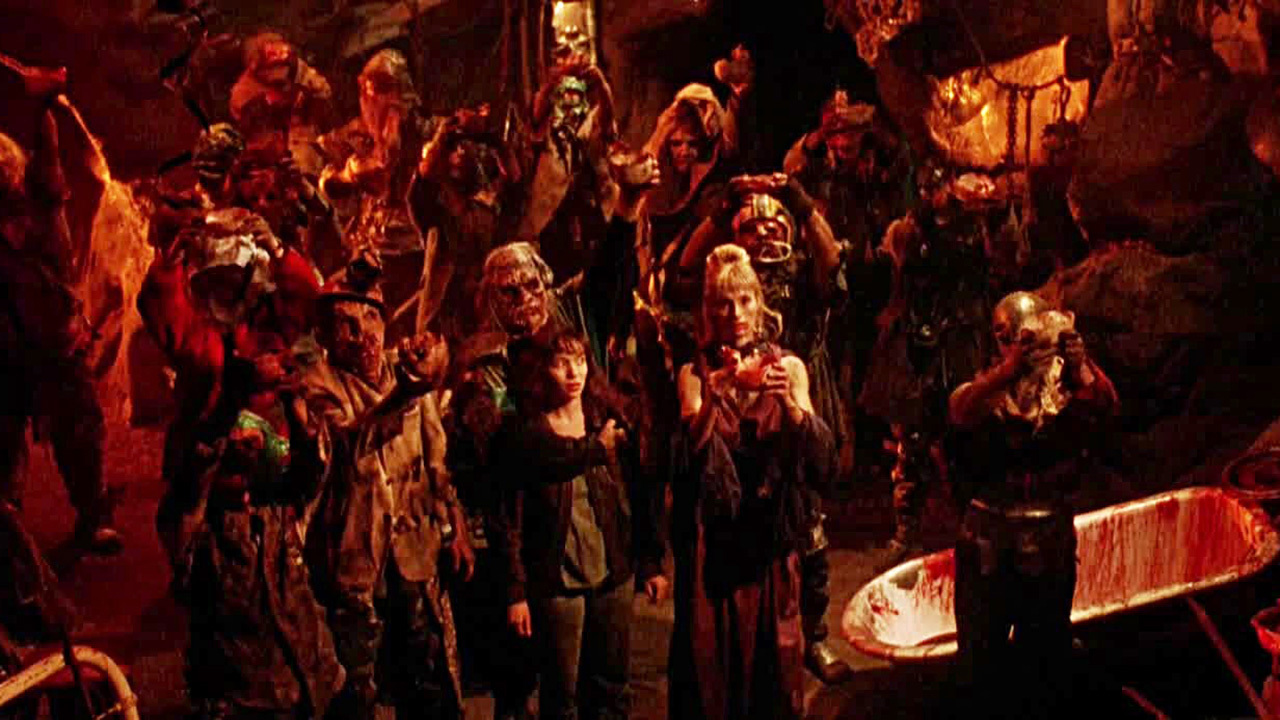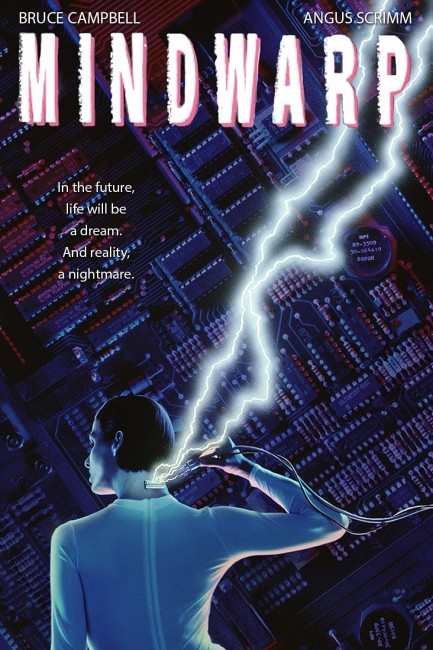USA. 1992.
Crew
Director – Steve Barnett, Screenplay – Henry Dominick, Producer – Christopher Webster, Photography – Peter Fernberger, Music – Mark Governor, Makeup Effects – KNB EFX Group, Production Design – Kim Hix. Production Company – Fangoria Films.
Cast
Marta Alicia (Judy Apple), Angus Scrimm (Theodore Apple), Bruce Campbell (Stover), Elizabeth Kent (Cornelia), Mary Becker (Pamela Apple), Wendy Sandow (Claude)
Plot
Judy Apple is sick of her life in a city of the future where everybody lives inside the Virtual Reality simulation Infinisynth. She decides to rebel by disrupting her mother’s virtual opera fantasy. However, she is interrupted by the Systems Operator who decides to give her a taste of reality. She emerges from the program to find her mother dead, whereupon the police burst in and arrest her. She is convicted and sentenced to exile in the wasteland outside the city that is inhabited by mutants and scavengers. There she meets the leader of the mutants, who reveals that he is her father who went missing several years ago. He has created a cult religion to exercise control over the mutants. He now reveals that he wants to breed with her to produce a race of pure and unblemished people.
Mindwarp is one of the trio of films that marked the first tentative venture into filmmaking by Fangoria magazine. The two others films produced were Children of the Night (1991) and Severed Ties (1992). Since its first publication in 1979, Fangoria magazine was the sharpest of several prozines on the market serving an interest in horror film. For nearly two decades at that point, Fangoria had been consistently on the ball in terms of announcing new talent, championing unseen and old films, and had set the pace regarding the genre with consistent excellence. Unfortunately, Fangoria‘s three ventures into filmmaking failed to succeed in setting anything on fire. Even more ignominiously, the three films sank unnoticed by the very target audience that Fangoria served.
Mindwarp is a routine effort. Surprisingly, for the fact that Fangoria is a horror magazine, the film offers up a science-fiction scenario, something that gives the impression the film has been made by Fangoria‘s sister magazine Starlog instead. This starts out with a moderate degree of promise in the scenes with the heroine rebelling against her society that spends all its time in Virtual Reality, only to be banished to a taste of reality by the Systems Operator. It quickly heads downhill from there.
What frustrates one is how the film keeps falling into broad clichés – the wasteland inhabited by slavering leprous mutants; a deranged messianic villain; the villain’s whip-cracking female sidekick who ties the heroine up in her underwear at one point. The end where it is all revealed to be a Virtual Reality illusion – surely the 1990s equivalent of the old “it’s all a dream” cliché – has a corniness that makes one want to throw something at the screen.

The film seems on the verge of breaking out and becoming more than that, but it never does and these big and obvious clichés are, one finds, all that there is to it. In the end, there is nothing to distinguish Mindwarp from a horde of other generic copies of Mad Max 2 (1981), The Terminator (1984) and Cyborg (1989) out there. The only point that the film does rise above the undistinguished is the ending where it bucks the tradition that most Virtual Reality films come to in deciding that reality is better than virtuality and where the heroine announces that dream is preferable to the real thing.
While Mindwarp is a science-fiction film, it clearly also feels that it has to justify the Fangoria name on the credits and offers up a parade of gore effects at regular intervals – meat-hook impalings, severed arms, slashed throats, arms chopped off, leeches burrowing under people’s skins and so on. Unfortunately, in that the film seems to have no interest in its clichéd science-fiction plot, the provision of these effects are the only discernible raison d’etre it appears to have. The nastiest of these is the gouging out of the sympathetic character of Claude’s eye and then the feeding of her into a mulcher. It is the only scene where any of the gore actually shocks, but considering the cartoony level the rest of the effects are intended on, one cannot help but feel it approaches more in the way of sado-exploitation.
Director Steve Barnett later went onto make the terrible Scanner Cop II: Volkin’s Revenge (1995). Behind the name of screenwriter Henry Dominick is the writing team of John Brancato and Michael Ferris who later went onto draft A-list screenplays such as The Net (1995), The Game (1997), Terminator 3: Rise of the Machines (2003), Catwoman (2004), Primeval (2007), Surrogates (2009) and Terminator Salvation (2009).
Trailer here


